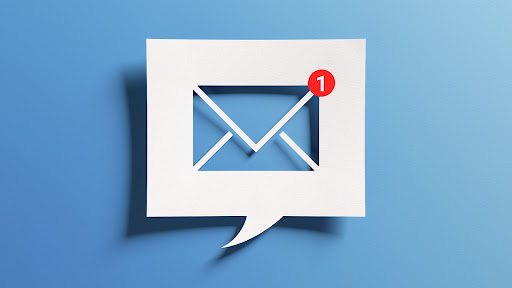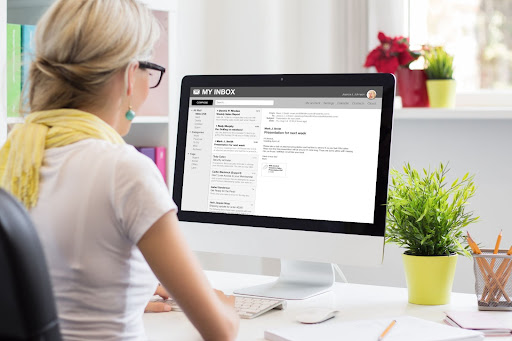Are you struggling to get your emails opened and read by your subscribers? If so, you’re not alone. Email open rates are a critical metric in email marketing, and finding effective strategies to improve them can significantly impact your campaigns’ success.
In this blog post, we will explore ten new, innovative tactics that you can try to boost your email open rates. From crafting attention-grabbing subject lines to personalization techniques and optimizing email design, we will cover a range of strategies that can help you engage your audience and increase the likelihood of your emails being opened.
Don’t miss out on these exciting approaches that can take your email marketing to the next level and drive higher open rates. Keep reading to learn some new ideas for increasing your email open rates.
10 Things to Try to Increase Your Open Rates
There are ten things you can try to increase your open rates, including subject line optimization, pre-header text optimation, sender name and email address, segmenting email lists, timing and frequency of emails, mobile-friendly emails, personalization techniques, high-quality email content, effective calls-to-action, and analyzing and testing.
Let’s take a closer look at how each of these elements affects email open rates and what you can do to increase those open rates.
1. Subject Line Optimization:
Subject line optimization is the process of crafting and refining the subject lines of your email marketing campaigns to increase the likelihood of subscribers opening and engaging with your emails. It involves testing and analyzing different elements of your subject lines to identify what resonates most with your audience.
- Effective subject lines play a crucial role in determining whether recipients open your emails or simply ignore them. By optimizing your subject lines, you can grab recipients’ attention and entice them to open your emails, increasing your open rates.
- Subject line optimization techniques include personalization, using attention-grabbing words or phrases, incorporating numbers or symbols, and A/B testing different subject lines to identify what works best for your specific audience. For example, A/B testing allows you to compare the performance of two subject lines to see which generates higher open rates. By continuously refining and improving your subject lines based on data-driven insights, you can increase the chances of your emails being opened by your subscribers.
Incorporating subject line optimization into your email marketing strategy can have significant benefits. Higher open rates mean more people are engaging with your emails, which can lead to increased click-through rates, conversions, and overall campaign success. It helps you cut through the clutter of crowded inboxes and grab the attention of your subscribers, increasing the effectiveness of your email campaigns.

2. Pre-header Text Optimization:
Pre-header text optimization refers to the practice of optimizing the introductory text or preview text that appears next to or below the subject line in an email.
- The pre-header text provides a brief summary or additional context about the email content to entice recipients to open the email. By optimizing the pre-header text, marketers can improve their email open rates and encourage subscribers to engage with their emails.
- The preheader text serves as a valuable opportunity to reinforce the message introduced in the subject line and provide a teaser of what recipients can expect in the email content. It allows marketers to grab the reader’s attention, provide a compelling reason to open the email, and increase the chances of their emails being opened and read.
- Optimizing the pre-header text involves writing concise, engaging, and relevant text that complements the subject line and sparks curiosity.
Marketers can experiment with different approaches, such as highlighting key offers, including a call-to-action, creating a sense of urgency, or providing a sneak peek of the content. Personalization and customization can further enhance the effectiveness of the preheader text.
The importance of pre-header text optimization lies in its impact on email open rates. An enticing and well-crafted pre-header text can captivate the reader and convince them to open the email, even if the subject line alone is insufficient.
It helps to differentiate your email from others in the recipient’s inbox, increase visibility, and ultimately improve the chances of achieving campaign goals and driving conversions.
3. Sender Name and Email Address:
The sender name and email address for your emails significantly influence open rates.
- According to a Litmus-Fluent survey, 42% of email users reported that the sender name is the initial thing they look at when deciding whether to open a campaign or not, followed by the subject line. The sender name is often the first impression recipients have of your email, and it can create a sense of trust, credibility, and familiarity.
- The sender name contributes significantly to the most influential metric in email marketing – open rates. Along with the subject line, it has the biggest impact on whether recipients decide to open the email or not. When open rates increase, it is likely that conversion rates will follow.
- A recognizable and trustworthy sender name can help recipients feel confident in opening your email. If they have had positive experiences with previous emails from the same sender, they are more likely to engage with future emails. Conversely, if the sender name appears suspicious or unfamiliar, recipients may be hesitant to open the email for fear of spam or phishing attempts.
- Similarly, the email address associated with the sender name can also impact open rates. A legitimate and recognizable email address contributes to the credibility of the sender.
Using a professional and branded email address instead of a generic one adds a sense of authenticity and trustworthiness. It also helps to ensure that the email is not mistakenly marked as spam or filtered into the wrong folder by the recipient’s email provider.
4. Segmenting Email Lists:
Segmenting is the process of dividing your email list into smaller, more specific groups based on shared characteristics such as demographics, behavior, or preferences.
By segmenting your email list, you can send targeted and relevant messages to each group, improving the effectiveness of your email marketing campaigns.
- Segmenting is crucial for improving email open rates. When you can personalize your emails to cater to the interests and needs of your audience, recipients are more likely to open and engage with your messages.
- Segmented email campaigns often lead to higher open rates than non-segmented campaigns, as they provide relevant and personalized content to each subscriber.
- Segmenting also helps to reduce the likelihood of sending irrelevant content to subscribers. By dividing your list into smaller groups, you can send targeted messages based on their interests, past purchases, or browsing behavior. This reduces the chances of recipients receiving irrelevant content and ultimately deciding to unsubscribe or mark your emails as spam.
Another benefit of segmenting is that it allows you to conduct A/B testing with greater accuracy. You can try different content, subject lines, or offers with each segment and compare the results. By testing and analyzing campaign performance, you can continue to improve your email marketing strategy and overall engagement rates.

5. Timing and Frequency:
Email timing and frequency play a crucial role in determining the performance of email marketing campaigns. In order to boost the open rate of your emails, it is important to consider the time and frequency of your emails.
- Email timing involves determining the most appropriate time to send emails to subscribers. Research has shown that the best time to send emails is dependent on the target audience and the objective of the email campaign. For instance, studies show that emails sent during weekdays, particularly Tuesday, Wednesday, and Thursday, have higher open rates than those sent on weekends. In terms of the time of day, the best time to send emails is usually during the mid-morning or early afternoon, depending on the subscriber’s time zone.
- Email frequency involves determining how often emails should be sent to subscribers. There is no one-size-fits-all frequency for sending emails, and it is best to tailor it according to the specific audience and the nature of the content.
Some research suggests that sending too many emails can increase the likelihood of unsubscribes while sending too few can reduce open rates. The ideal email frequency for each audience should be determined by testing different frequencies and analyzing the campaign results.
6. Mobile-Friendly Emails:
Having mobile-friendly emails is crucial in today’s digital landscape. With the widespread use of smartphones and mobile devices, a significant portion of email opens, and engagement happens on mobile platforms.
Creating emails optimized for mobile devices contributes to a positive user experience, improves open rates, and enhances the effectiveness of your email marketing campaigns.
Here’s why having mobile-friendly emails is important and how it can affect your open rate:
- Mobile device usage: A large percentage of email users access their emails on mobile devices. If your emails are not mobile-friendly, they may appear poorly formatted or difficult to read on mobile screens, leading to a negative user experience and potentially lower open rates.
- Improved readability: Mobile devices have smaller screens compared to desktop computers. Designing your emails to be mobile-friendly ensures that they are easily readable and visually appealing on smaller screens. Well-optimized emails adjust their layout, font size, and images to fit smaller screens, making it easier for recipients to consume your content.
- Enhanced user experience: Mobile-friendly emails provide recipients with a seamless and user-friendly experience. They load quickly, have easy-to-tap buttons and links, and adapt to various screen orientations. A positive user experience leads to increased engagement, as recipients are more likely to open and interact with emails that are thoughtfully designed for mobile use.
- Avoiding email deletion: Non-mobile-friendly emails may frustrate recipients, prompting them to delete the email without even opening it. If users consistently encounter issues when viewing your emails on their mobile devices, they may unsubscribe or mark your emails as spam. Ensuring your emails are mobile-friendly increases the chances of your emails being opened and engaged with.
- Search engine optimization (SEO) benefits: Mobile optimization is important for user experience and search engine rankings. Google and other search engines consider mobile-friendliness as a factor in determining search rankings. Therefore, having mobile-friendly emails can indirectly impact your visibility and attract more recipients to open your emails from search results.

7. Personalization Techniques:
Personalization techniques can significantly increase open rates by creating a more tailored and relevant email experience for recipients. After all, if you feel like something is made for you, wouldn’t you be more inclined to open it?
When your emails resonate with subscribers on a personal level, they are more likely to open and engage with your messages. Here’s how personalization can help increase your open rates:
- Improved subject lines: Personalizing subject lines by including the recipient’s name or referencing their past interactions can capture attention and spark curiosity. Studies have shown that personalized subject lines have higher open rates compared to generic ones. For example, including the recipient’s name can create a sense of familiarity and make the email feel more personalized.
- Relevance and targeted content: Personalization allows you to deliver content that matches the recipient’s interests, preferences, or behavior. You can send highly targeted emails by segmenting your email list and customizing content based on specific criteria such as demographics, previous purchases, or browsing history. When subscribers receive content that aligns with their needs and interests, they are more likely to open and engage with those emails.
- Dynamic content: Using dynamic content in emails allows you to customize and adapt the email content based on each recipient’s characteristics. Dynamic content can include personalized product recommendations, location-specific offers, or targeted messaging based on the recipient’s previous interactions. By presenting relevant and personalized information, you create a sense of individual attention and increase the likelihood of recipients opening and engaging with your emails.
- Behavior-triggered emails: By setting up automated email campaigns triggered by specific behaviors or actions, you can provide timely and relevant content to your subscribers. For example, sending a personalized welcome email immediately after someone signs up or a follow-up email after a purchase can enhance engagement and open rates. Behavior-triggered emails demonstrate that you understand the recipient’s actions and are responsive to their needs, increasing the chances of them opening the email.
- Relationship-building and trust: Personalized emails create a sense of connection and build trust with your subscribers. When recipients feel that the email content is specifically tailored to them, they are more inclined to view your emails as valuable and trustworthy. This relationship-building aspect contributes to higher open rates, as subscribers are more likely to engage with emails from a trusted source.

8. High-Quality Email Content:
High-quality email content is incredibly important because it directly impacts email open rates. Quality content that caters to the needs and interests of subscribers is more likely to be opened and engaged with.
According to a Mailchimp report, segmented email campaigns with personalized content have an open rate above 18%, compared to non-segmented email campaigns with an average open rate of 15%. Here’s how email content quality impacts open rates:
- Subject lines: Similar to personalized subject lines, quality subject lines that clearly communicate the content of the email are more likely to be opened. It is important to pay attention to the language used in subject lines since spam filters pick up words like “free,” “guarantee,” and “discount,” and these can affect open rates. Additionally, a subject line with between 30-50 characters is optimal, while subject lines with fewer than ten or more than 60 characters tend to have lower open rates.
- Relevance and targeted content: Personalizing content to the needs and interests of recipients is important in increasing open rates. Emails with personalized subject lines and content have a higher open rate compared to emails that are not personalized.
- Engaging content: Emails with engaging content are more likely to resonate with recipients and translate into higher open rates. Using multimedia elements such as images and videos, incorporating humor, and providing interactive content such as polling questions can increase the likelihood of an email being opened and encourage engagement.
- Consistency and frequency: Consistently delivering quality email content builds trust, leading to a higher open rate. Frequency also plays a crucial part; too many or too few emails can impact open rates negatively. Customers tend to disengage from emails that come too frequently, while emails that are too infrequent may be forgotten or overlooked.
9. Compelling Call to Action:
An effective call to action (CTA) is crucial because it guides the email recipient toward taking a specific action, such as making a purchase, signing up for a newsletter, or downloading a resource.
A well-crafted CTA captures the attention of the reader and compels them to take the desired action. The presence of a clear and compelling CTA can significantly affect email open rates.
Here are a few reasons why an effective call to action is important for open rates:
- Increased engagement: A strong CTA encourages recipients to interact with the email by clicking on the provided link or button. This engagement boosts open rates as it indicates that the email content has captured the reader’s interest and motivated them to take action.
- Clarity of purpose: A well-defined CTA leaves no room for ambiguity. It clearly communicates what to do next, guiding the recipient toward the desired action. This eliminates confusion and helps recipients understand the purpose of the email, leading to higher open rates.
- Relevance and personalization: Tailoring the call to action to the specific needs and interests of the recipient can significantly impact open rates. When the CTA aligns with the recipient’s preferences and provides value to them, they are more likely to engage with the email by opening it and taking the desired action.
- Placement and design: The placement and design of the CTA within the email can influence open rates. A strategically positioned and visually appealing CTA can draw attention and entice recipients to click, leading to higher open rates.

10. Analyze and Test:
Analyzing and testing emails is crucial for improving email open rates. If you aren’t consistently finding ways to improve your emails, that open rate will likely stay the same or decrease even further, which we don’t want!
Here are more reasons why you should analyze and test every part of your email content.
- Identifying effective subject lines: Analyzing the open rates of different emails with varying subject lines can help identify which subject lines are effective in catching the reader’s attention. This information can inform future email campaigns and lead to improved open rates.
- Optimizing email content: Testing different email content formats, such as text-only versus HTML, or plain text versus rich media, can help identify the most effective content format for a particular audience. Open rates can improve by optimizing email content to resonate with the recipient.
- A/B testing: A/B testing provides valuable insights into what type of content, subject lines, personalization, or other factors lead to higher open rates and other engagement metrics.
- Improved email engagement: Testing and analyzing email campaigns can provide valuable insights into which emails resonate with the audience. By understanding which content and campaigns are engaging recipients, marketers can create more targeted campaigns that lead to higher open rates and engagement.
Email Marketing With Revity Marketing
Are you tired of having the same open rates? Are you looking for ways to increase yours?
Take control of your email marketing and start seeing results today. Contact Revity Marketing to discuss how we can help you elevate your email campaigns and increase your open rates.
Our team of experts is dedicated to crafting engaging emails, optimizing subject lines, and employing effective strategies that will captivate your audience and drive higher engagement. Don’t miss out on the opportunity to maximize the potential of your email marketing. Get in touch with us now and unlock the power of impactful emails.
Call us at 801.559.7539, or schedule an appointment with us through our website to get started today.
































